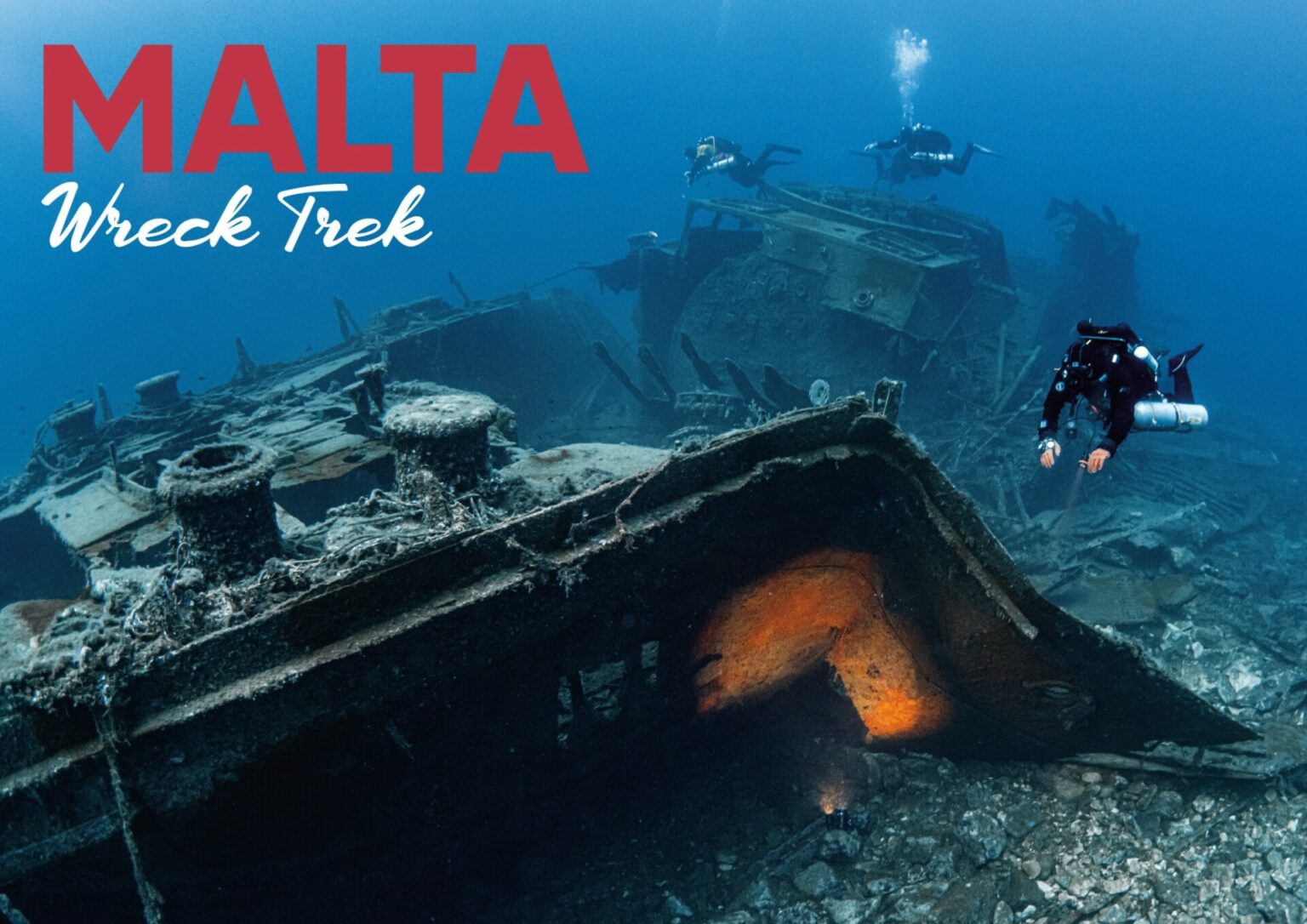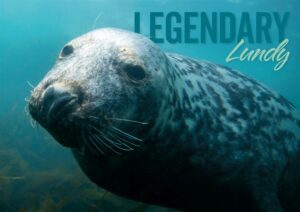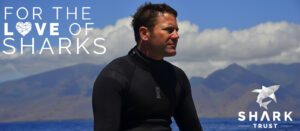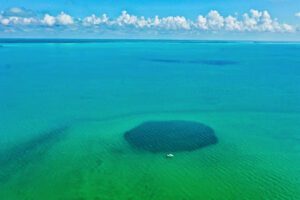Kurt Storms was in Malta for the Rebreather Forum 4 event, but while he was there, he took the opportunity to do a whistlestop tour around some of the island’s top shipwrecks
Photographs by Kurt Storms
Who doesn’t want to dive the wrecks lying on the seabed in Malta?
I had been asking myself this question for years, until I was asked by a fellow instructor to help with a normoxic training course. I didn’t have to think for long, as I would be on-site the following week for Rebreather Forum 4 with Divesoft.
Fully packed with my Divesoft Liberty SM rebreather and my camera, I embarked on a beautiful trip in sunny Malta with my regular buddy, Willem Verreycken.
Malta, a small island in the middle of the Mediterranean, surrounded by blue waters, has always been a strategic point between Europe and Africa in the past. Because of this strategic point, a diversity of countless wrecks have collected on the seabed during the various wars.
This has made Malta the diving country for novice and extreme wreck divers who want to enjoy the splendour of metal and wood.
There are artificial wrecks on the bottom that have been sunk specifically to attract diving tourism, including the Um El Faroud, while Malta also has many historic wrecks from World War Two that are accessible to recreational divers. In this article, I am going to talk about just a few of them.
Um El Faroud
The ship was built in 1969 at Smith Dock Co Ltd, Middlesbrough, England and was owned by the General National Maritime Transport Company, Tripoli (GNMTC).
The Um El Faroud was a 5,390 DWT Libissche tanker with a single screw engine launched on 31 May 1969. Until 1 February 1995, she was working between Italy and Libya carrying refined fuel. On 3 February 1995, she was docked in dry dock No 3 of Malta.
But during the night, an explosion occurred in central tank No 3, killing nine dockyard workers. The ship was so structurally deformed that she was written off for navigation after inspection and survey.
It spent three years in dock at Valletta port until 1998, when it was decided that the best option to exploit her remaining value was to tow her out to sea and sink her as an artificial reef.

Did you know?
The wreck lies upright on the sandy seabed southwest of Wied il-Qrendi. Um El Faroud is 109 metres long. The ship has a width of 15.5 metres and a height from keel to funnel top of about 22 metres. The depth of the bridge is 18m and the main deck requires you to dive to 25m. The bottom rests at 36m, where you can admire the rudder and propeller beautifully on the white sandy bottom. After a severe storm in the winter of 2005/2006, the ship is now broken in two.
Wreck penetration is possible with access to both the engine room and several of the smaller surrounding rooms in the aft section and parts of the middle and forward storage section of the ship.
Although still relatively new, the wreck has quickly become popular with fish, including pelagic species such as tuna, mackerel and barracuda. Divers may encounter squid and barracuda near the stern.
“ The wreck is at about 120 metres from the entrance point at a depth of around 12-14m, making this an ideal place to introduce novice divers to the beauty of wreck diving ”
HMS Hellespont
HMS Hellespont was built by Earle Shipbuilding CO. And launched on 10 May 1910. HMS Hellespont was stationed at the Haulbowline Dockyard in Queenstown Ireland. It came to Malta in 1922. HMS Hellespont was a paddle steamer, therefore do not look for the propeller, but rather for the boiler located next to the wreck.


HMS Hellespont was sunk about 1.5km from the Valletta Grand Harbour entrance during World War Two. It was sunk near Rinella during an air raid by Italian aircraft between 6 and 7 April 1942.
The first time the HMS Hellespont was discovered was on 15 May 1999 by some divers. At 42m, she sits upright on a sandy bottom 46 metres long. Most of the wreck is still intact, the only exception being 15 metres of the bow section, which had been completely destroyed.
To dive the wreck, you have to go by boat. Today we are using the boat of the dive centre Dive System, with Simon Sciberras as captain and owner.
The skipper will drop a shotline at the right spot, so you can perfectly go down, and safely back up, on the line, making your deco commitments. Also take a look at the boiler, which is still in very good condition, a few metres away from the wreck on the starboard side of the wreck.
HMS Maori
This 1,870-ton tribal-class British destroyer built by Fairfield, Govan, England was launched on 2 September 1937. This ship had an overall length of 115 metres, width of 11 metres, main armament of eight 4.7 guns, four 21 torpedo tubes, and twin screws with a speed of up to 36 knots.

This 1,870-ton tribal-class British destroyer built by Fairfield, Govan, England was launched on 2 September 1937.
During World War Two, HMS Maori was involved in convoys in Norway and Malta. She was one of four destroyers that on 13 December 1941, sank two Italian cruisers off Cape Bon.
The destroyer sank with the stern first, causing the bow to rise from the sea and slowly she filled with water and sank. In 1945, she was cut in two and the forward part was made afloat again and was towed to St Elmo Bay, where she has now been given her resting place.
The Maori can be dived from the shore as well as by boat. Boat dives don’t happen much, only when the water outside the bay is more difficult. Diving from the shore is very easy, and the most-common dive.
The wreck is at about 120 metres from the entrance point at a depth of around 12-14m, making this an ideal place to introduce novice divers to the beauty of wreck diving. There is also a lot of life on the wreck, such as moray eels, scorpionfish, among others. It is also a good place for night diving.

S-31 Schnellboot
The S-31 belonged to a subgroup numbered from S-30 to S-37. The S-31 and its subgroup numbered brothers were built by Lurssen in Vegesack, Germany and were launched in 1939.
S-31 was a German fast motor torpedo boat (Schnellboot, S-boat, E-boat) and had a Met power of 4,800 HP delivered by the three Daimler Benz MB502 diesel engines.
With a range of 800 nautical miles at 30 knots and a max speed of 38 knots, the S-31 was one of the fastest boats. The S-31 was equipped with two 533 mm torpedo tubes, and two 20mm guns. The S-31 Schnellboot had a crew consisting of 24 sailors, but at the time of loss, the S-31 had two Italian officers on board as observers.
On 10 May 1942, while laying mines near Valletta’s Grand Harbour, the S-31 collided with a loose mine (possibly one of her own) and sank. 13 of her crew were rescued and 13 were lost, making the S-31 a war grave.
The S-31 wreck lies upright on the sandy/sandy seabed at a depth of about 65m. This is a boat dive for technical divers only who have the knowledge of mixed gas diving or rebreather diving. The wreck is about 33 metres long and five metres wide.
Schnellboots were made of an aluminium frame covered with mahogany planks, and the wooden casing of S-31 has rotted away, leaving only the metal frame.
The hull is broken in two, but otherwise the World War Two wreck is still fully intact with its original armament that divers can examine: the three engines, triple propellers and rudders on the stern, one torpedo tube on the bow with her torpedo ready for launch, and another torpedo tube partly still on the wreck.
Schnellboot S-31 wreck was found in September 2000 by a team of technical divers. From 1 May 2019, S-31 will be managed by Heritage Malta.

“ This is a boat dive for technical divers only who have the knowledge
of mixed gas diving or rebreather diving ”
Conclusion
Malta still has countless wrecks on the bottom to be discovered. Not all wrecks are currently released, but Heritage Malta is working in collaboration with Valetta University to map them.
Archaeologists will join in the depths to document everything. This project will endure for years to come, under the fine guidance of Professor Timmy Gambin.
This article was originally published in Scuba Diver UK #76.
Subscribe digitally and read more great stories like this from anywhere in the world in a mobile-friendly format. Linked from Malta Wreck Trek








